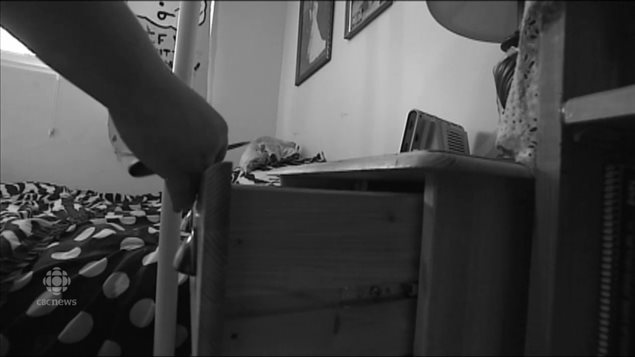Over the past five years, there has been an 85 per cent increase in the number of Canadian children who are admitted to hospital because they have intentionally harmed themselves, according to a new report. The information gathered by the Canadian Institute for Health Information indicates the most common forms of self-harm involve poisoning and cutting with a sharp object.
In 2013-14 there were nearly 2,500 children between the ages of 10 and 17 who were hospitalized due to intentional self-harm. That represents one in four hospitalizations for this age group.Girls account for 80 per cent of young people admitted for self-harm injury.
‘Trying to…feel better’
“They’re trying to make themselves feel better,” says Dr. Marshall Korenblum, an associate professor of psychiatry at the University of Toronto and chief psychiatrist at the Hincks-Dellcrest Centre in Toronto.
Listen“As paradoxical as it may sound, cutting in particular, releases endorphins and these substances can be mood-elevating, and they actually numb pain. So it’s a paradox that pain relieves pain, but that’s exactly what happens when these kids do it. So they’re trying to regulate their own emotions and feel better about themselves.”Abused at greatest risk
Most at risk are children who have been physically or sexually abused, says Korenblum. “That’s because they feel guilty and awful about themselves, and particularly about their bodies.”
Also at greater risk are those who have been neglected, marginalized, bullied or teased, and those who, through reasons of biology or temperament, have greater difficulty regulating their emotions. “They are hyper-sensitive, hyper-reactive, slow to return to a base-line of calmness. So they are trying to regulate their emotions through this self-harm behaviour.”

Increase involves many factors
“Not surprised,” was his reaction to news of the increase in self-harming behaviour. Korenblum has seen more cases in the clinic at which he works. Among possible reasons, he thinks campaigns to reduce the stigma of mental illness have encouraged more young people to report self-harm.
The increase occurred over the same period of time that there was a recession in North America, and children may have felt the stress of their parents losing their jobs or having financial difficulties.
Culture has been a catalyst, he thinks. There have been songs and movies in which the key characters have harmed themselves. And social media may perpetuate the practices by making how-to instructions easily available and by allowing people who self-harm to communicate with each other.
Detecting self-harm
How do you know if someone is cutting? If they wear long-sleeved tops in hot weather they may be hiding scars. Long, fingerless gloves are used too. Depression is another clue, says Korenblum. Parents may observe sleep difficulties, a lack of appetite or energy, school marks may go down and the child may be more irritable or argumentative.
Handling self-harm
If parents discover their sons or daughters are self-harming, Korenblum says it is important that they not “freak out” or get angry. Instead, he recommends they be non-judgemental, keep the lines of communication open, and that they get the youth to a mental health professional.
Professionals need to do a comprehensive psychosocial and psychiatric evalutions on the person to see if there are any treatable psychiatric conditions like depression. “We need to develop better treatments for emotion regulation,” says Korenblum. “Things like mindfulness, how to soothe oneself, how to calm oneself down without resorting to cutting. And there are certain therapies that are being developed for this.”







For reasons beyond our control, and for an undetermined period of time, our comment section is now closed. However, our social networks remain open to your contributions.